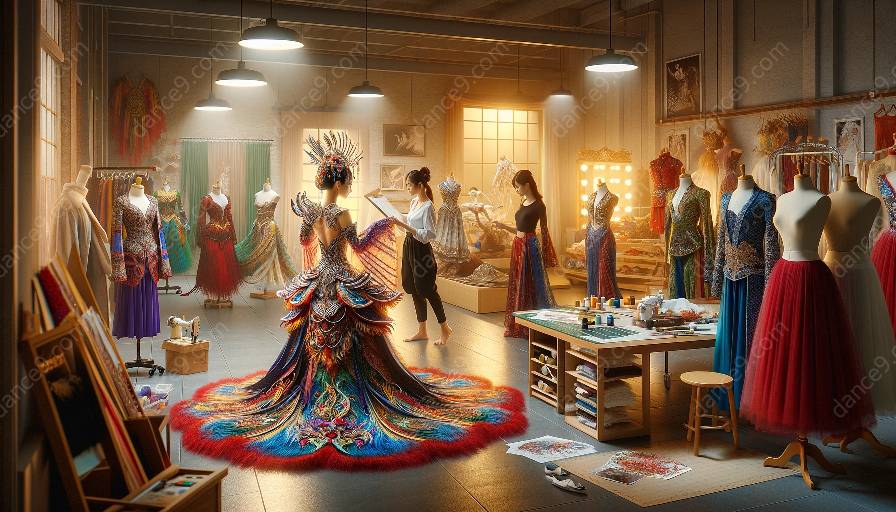Dance is an art form that integrates various elements to create a captivating performance. Among these elements, costume, lighting, and set design play crucial roles in enhancing the visual and thematic impact of the dance.
Costumes in dance are not just clothing; they are extensions of the dancer's body and expressions of the choreography. The design and choice of costumes can aid in conveying the mood, character, and narrative of the dance piece. From fabric selection to color schemes, costumes contribute significantly to the visual storytelling of the performance.
Similarly, lighting design is a powerful tool in creating ambiance, highlighting movements, and evoking emotions in dance. The interplay of light and shadow can accentuate the choreography, adding depth and dimension to the dancers' movements. Moreover, lighting design also serves practical purposes by guiding the audience's focus and creating visual focal points within the performance space.
Set design complements and completes the visual landscape of a dance performance. Whether abstract or representational, the set design frames the dancers, establishes the atmosphere, and situates the performance within a specific context. The set elements, such as props, backdrops, and structures, not only serve as visual backdrops but also interact with the dancers, influencing their movements and interactions within the space.
The Collaborative Process
Effective collaboration among costume designers, lighting designers, set designers, and choreographers is essential to ensure a harmonious integration of these elements. Communication and coordination are key in aligning the artistic vision and ensuring that the costume, lighting, and set designs complement and enhance one another.
The collaborative process begins with understanding the thematic and narrative aspects of the dance piece. This understanding guides the designers in creating cohesive visual elements that support and enrich the choreography. For example, the choice of colors and textures in costume design may resonate with the lighting palette, while the structural elements in set design can harmonize with the movements and formations within the choreography.
Enhancing the Dance Experience
When costume, lighting, and set design converge seamlessly, they elevate the overall dance experience for performers and audience alike. The synergy of these elements enhances the clarity and impact of the choreography, immersing the audience in the visual and emotional journey of the dance performance.
Furthermore, the integration of costume, lighting, and set design opens up creative possibilities for innovative and immersive dance productions. It allows for experimentation with unconventional materials, dynamic lighting effects, and interactive set elements, enhancing the artistic expression and pushing the boundaries of traditional dance performances.
Challenges and Solutions
While the intersection of costume, lighting, and set design offers immense creative potential, it also presents challenges in terms of logistics, technical coordination, and budget constraints. Designers and choreographers must navigate these challenges through effective planning, resource management, and technical expertise.
One common challenge is balancing the aesthetic vision with practical considerations. For example, striking a balance between visually impactful costumes and costumes that facilitate ease of movement for the dancers requires thoughtful design and material choices. Similarly, managing the interplay of complex lighting cues and set changes demands meticulous attention to technical details and rehearsal coordination.
To address these challenges, clear communication and early collaboration between the design teams and choreographers are crucial. Additionally, leveraging modern technology, such as computer-aided design software for set and lighting design, can streamline the visualization and implementation processes, allowing for efficient problem-solving and seamless execution.
Conclusion
The intersection of costume, lighting, and set design in dance is a multifaceted and dynamic realm that significantly contributes to the artistic richness of dance performances. By recognizing the collaborative potential of these elements and embracing the challenges with innovative solutions, designers and choreographers can continually push the boundaries of creativity, shaping compelling and immersive experiences for dancers and audiences alike.











































